9 Super-Creative Arched Doorway Ideas That Will Make Your Transitional Spaces the Star of Your Home
Bring awkward in-between spaces to life one arched doorway at a time. Here are some designer-approved ideas to inspire you

Keith Flanagan

I can't say I've ever given much thought to the doorways in my home. They serve their purely practical function, while I save my time and attention for working out where to place pieces of furniture and hang art on the walls. But lately, I've discovered that designers do, and the abundant arched doorway ideas I've been seeing have completely shifted my perspective.
"Doorways are often overlooked in interior design, yet they hold so much potential, explains interior designer and high-end furniture artist, Paddy Pike. "By framing a doorway, it becomes more than an architectural feature — it becomes a sculptural moment that interacts with its surroundings and the people moving through it."
And while the everyday arched doorway is certainly one way to do it, this new interior design trend goes so much further than that, making these transitional spaces feel as considered as the rest of the contents of the room. Nothing is more integral to home design than the doorway — so I ask: why not make it a statement?
1. This Futuristic Chromatic Arched Doorway

"I’ve always been fascinated by the way we move through spaces and how architecture influences our perception of a room," says Paddy Pike. Previously, Paddy experimented with decorative reveals in a different way: tufted trims around doorways that extended into rugs on the floor.
In his design shown above, the chrome metallic frame becomes an art piece as well as a natural extension of the room. You can almost no longer imagine the room without this arched doorway idea. "I enjoy using polished steel as it can adapt to its surroundings — it subtly mirrors the materials and tones of the space, making it feel fluid rather than imposing. As you walk through, you see yourself reflected, reinforcing your connection to the space," says Paddy.
It's a point of transition, he continues. "I wanted to highlight that moment of change. With these designs, you don’t just walk past or through them — you become part of them."

Paddy Pike studied Mechanical Engineering at Edinburgh University and brings an academic side to the artistic forms he creates. He previously worked in furniture design and production for several notable galleries and design studios. Now he works on his own business, Paddy Pike Studio.
2. Add a High Shine Material Into Arches
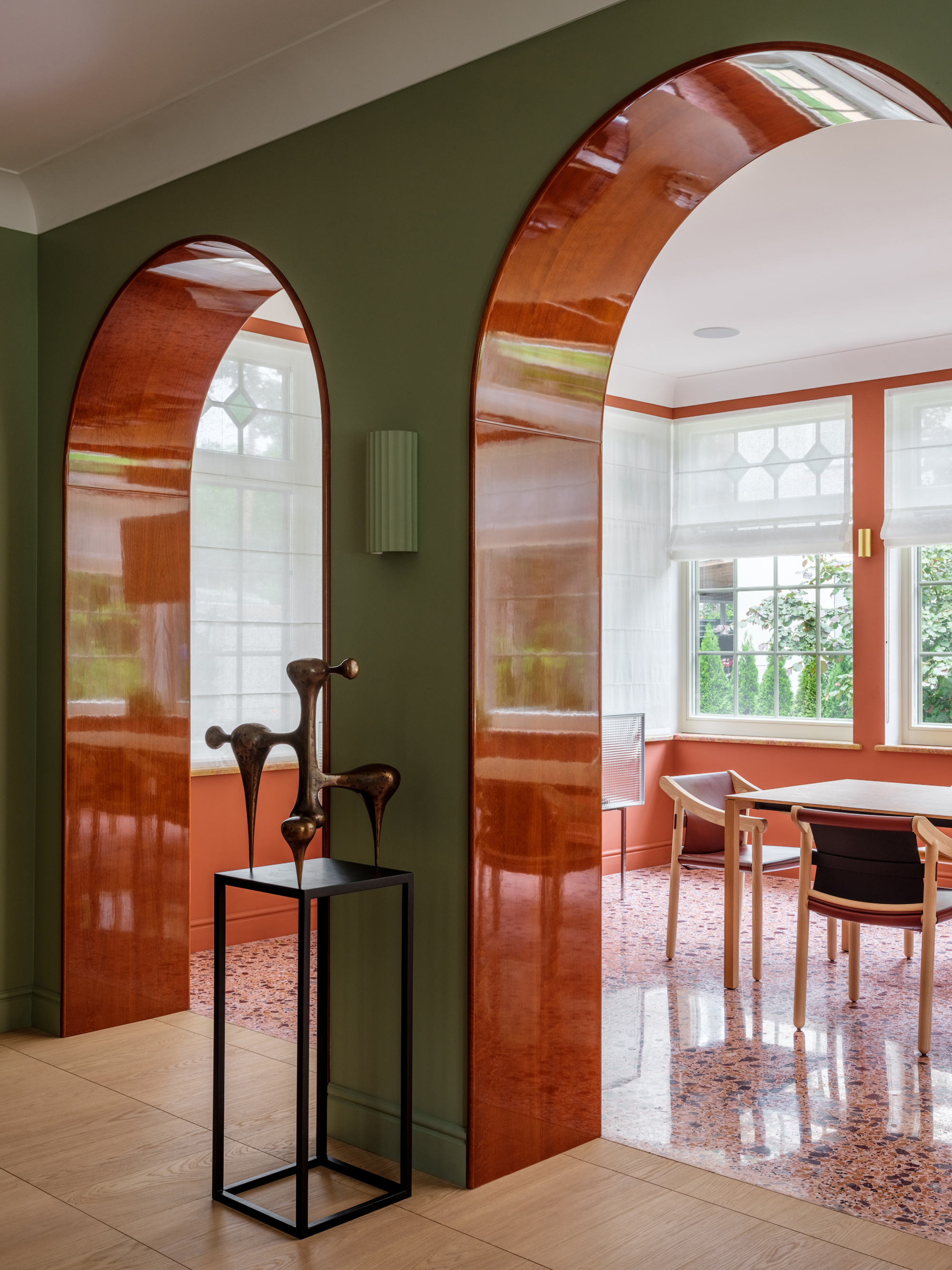
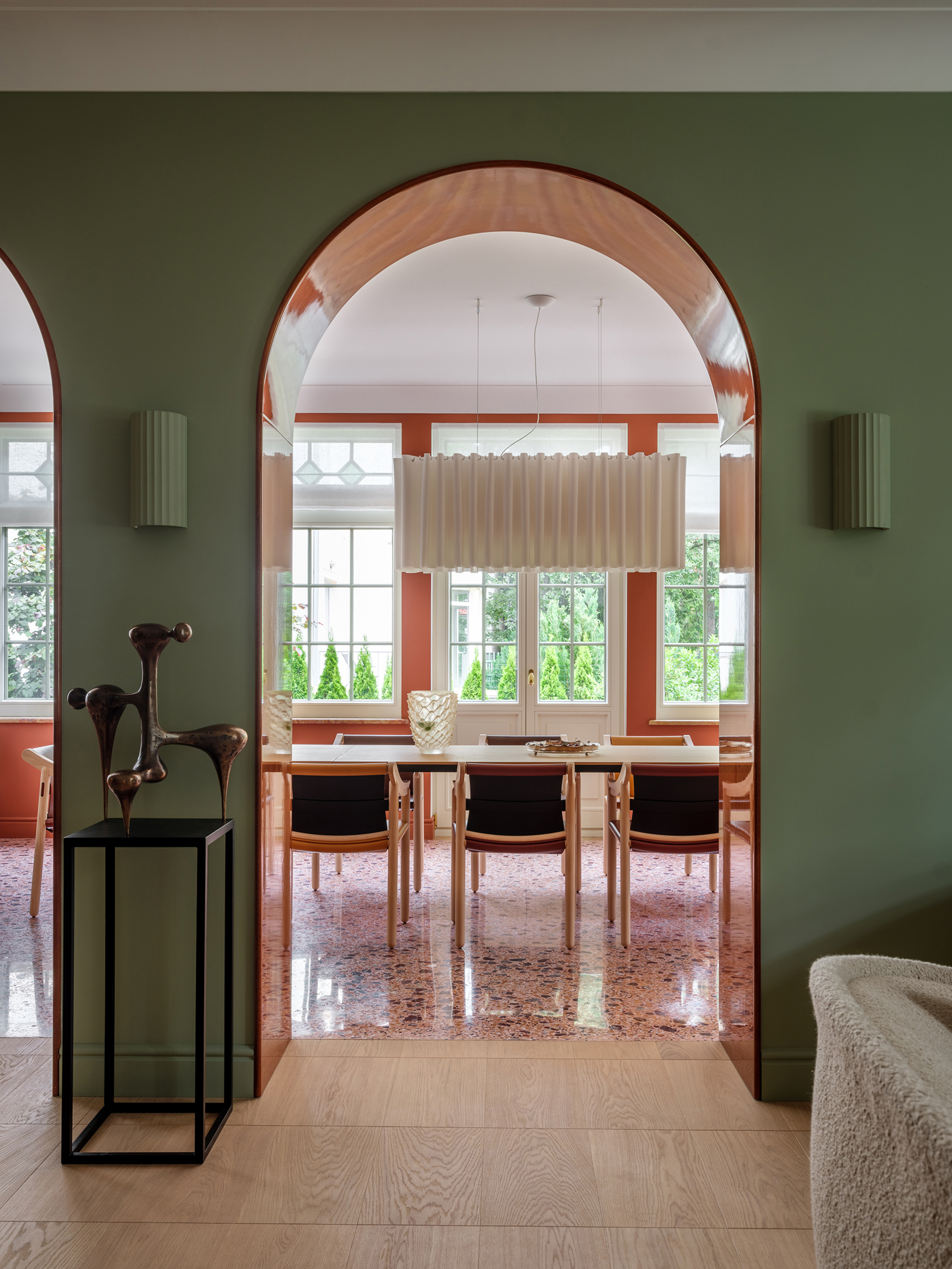
Arched doorways are an elevated and more whimsical version of a classic door trim idea. The aim with this trend is to "take something that could feel very ordinary and easy to pass over, and instead makes a point to elevate it and create a visually arresting moment," explains Morgan Stewart, principal designer at Studio Lithe.
The Livingetc newsletters are your inside source for what’s shaping interiors now - and what’s next. Discover trend forecasts, smart style ideas, and curated shopping inspiration that brings design to life. Subscribe today and stay ahead of the curve.
There are several ways you can do it, but the most important thing is understanding how to draw attention to the threshold in a way that fits your unique space. This way you can master "turning it into an immersive experience rather than just a passage," explains Paddy.
For example, in a home oozing with a mid-century aesthetic, pick a material that would pack a punch yet still feel true to the design style. For instance, lacquered woods (like seen in the decorative door reveal shown above), gloss paint ideas, and moody tiles would be the perfect way to honor and elevate a mid-century modern home in your arched door reveal.
3. Tile Around an Arched Doorway
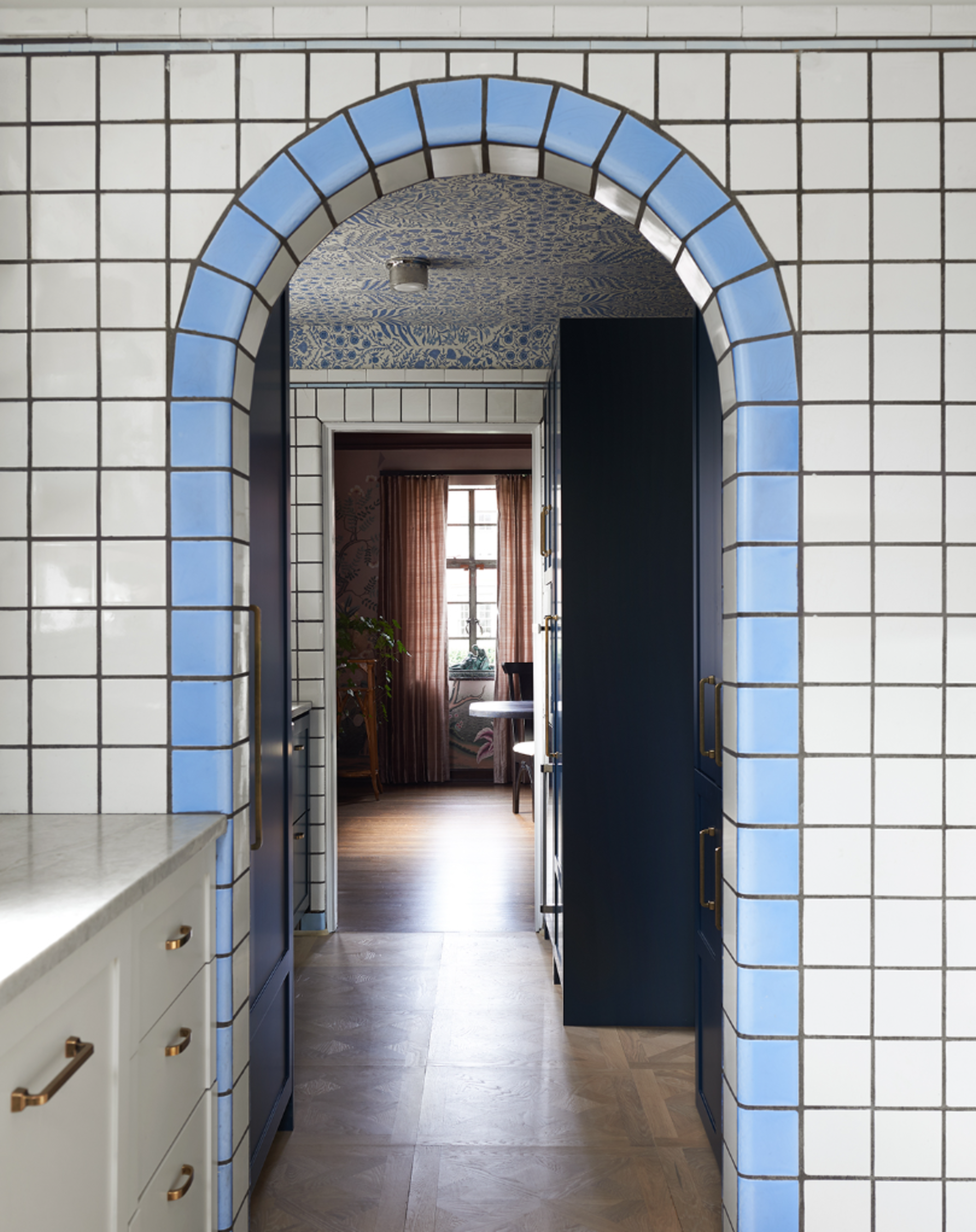
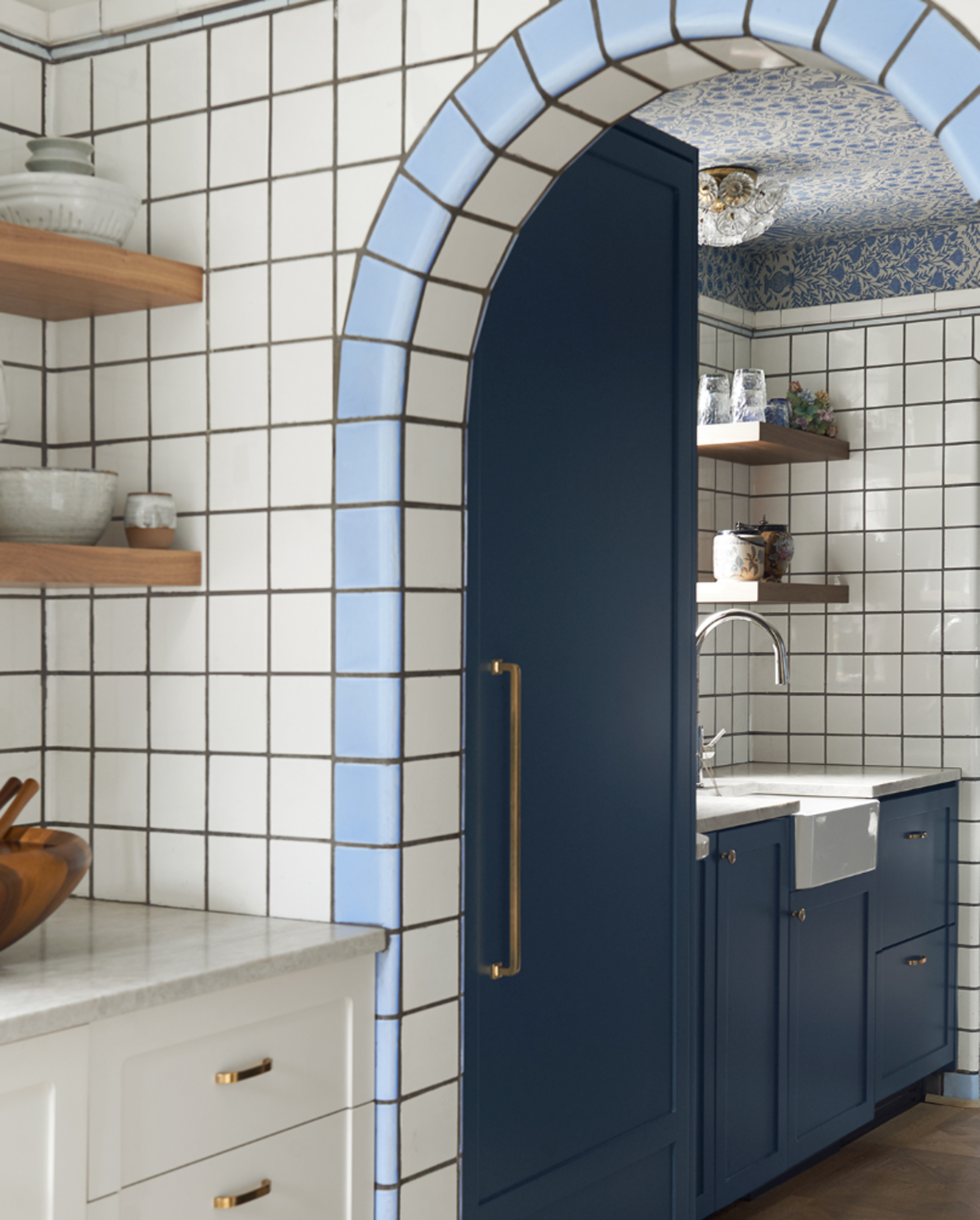
It is important for a bold arched doorway to still feel part of a whole and not extraneous, though. "Blending shape, color, or pattern subtly into adjacent spaces will only add to the coherence and consistency of the visual language," says Morgan.
For instance, in the doorway above, "we found complementary blues tones in the wallpaper and casework color in the butler's pantry and pulled a curve into the trim detail of the cabinetry across the kitchen," says Morgan. Extending the kitchen tile into the design of the arched doorway? Genius.
4. Accentuate Architectural Quirks
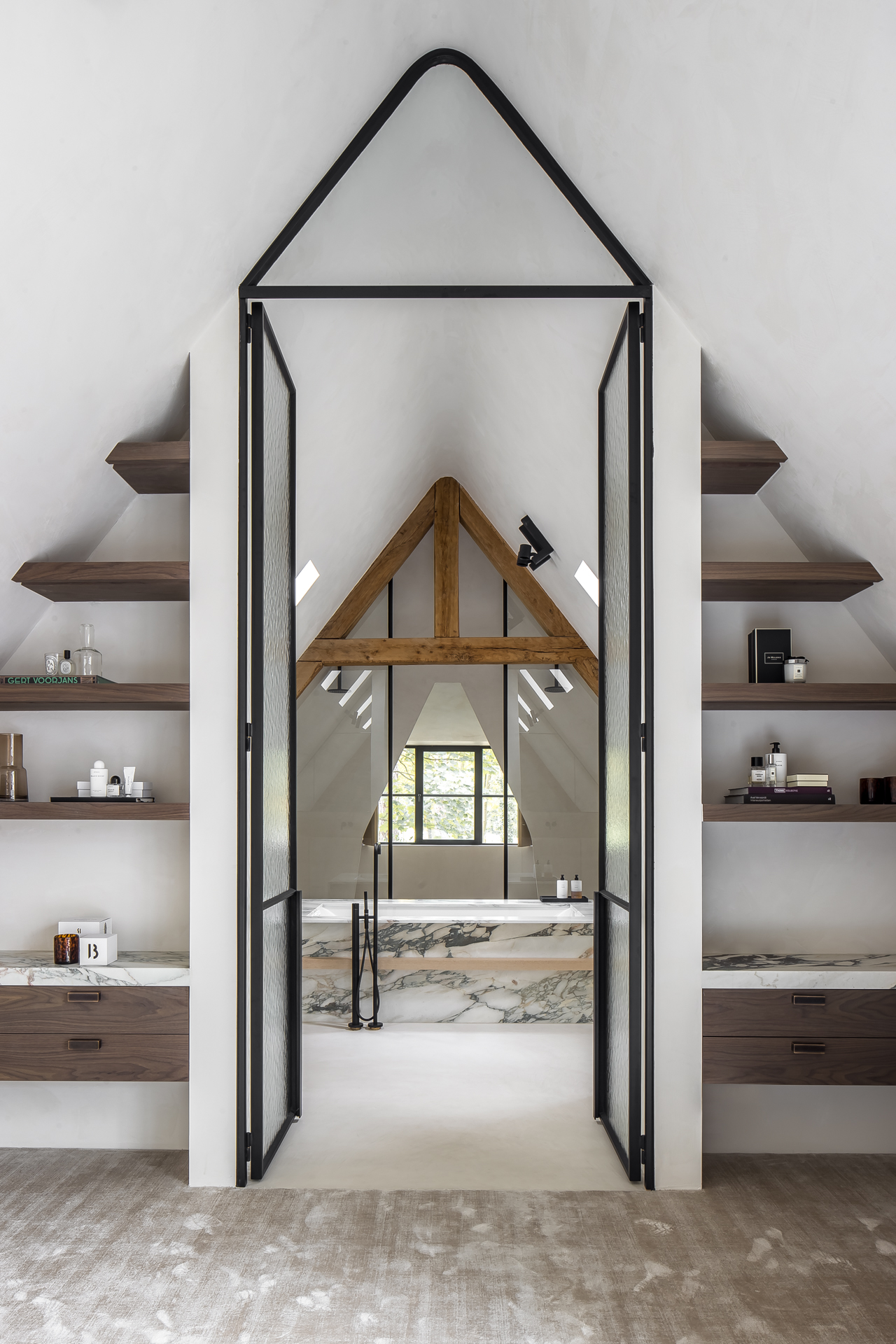
Instead of hiding the architectural bones of your space, consider letting your door frame highlight the structure itself. In this Antwerp home, 'D' Architectural Concepts embraced the pitched roof, crafting a modern bathroom doorway that frames the architecture. "In this project I wanted to feel the height of the ceiling in the master bedroom," says Dennis T'Jampens of the ceiling-high door frames. "I wanted to accentuate the architecture, which determined the story of the interior."
5. Heighten a Door Frame
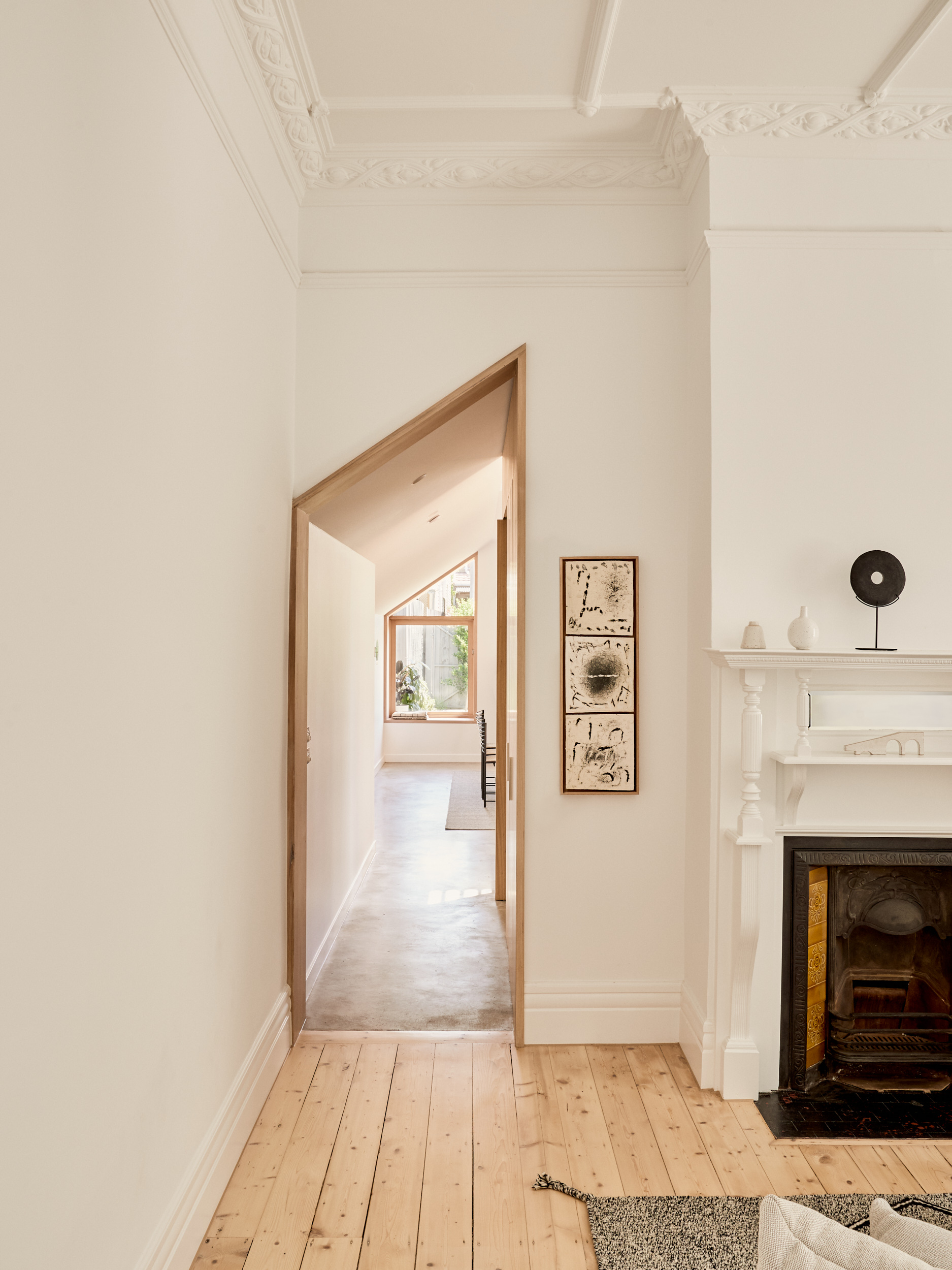
While straight lines are typical of modern door frames, this angular arched passage between a living room and kitchen is perfectly abstract against the home's ornate architectural molding. The 45-degree angle follows the roof’s sharp slope, while the use of materials eases the flow from an older space into a new addition. "The concept for Bianco House was to honor the existing 'white on white' palette and bring warmth to the home through select moments of timber," says Melbourne architect Nick Harding. "We elected to outline the doorway in timber to demarcate the transition from the existing house to the extension."
6. Paint a Door and Trim
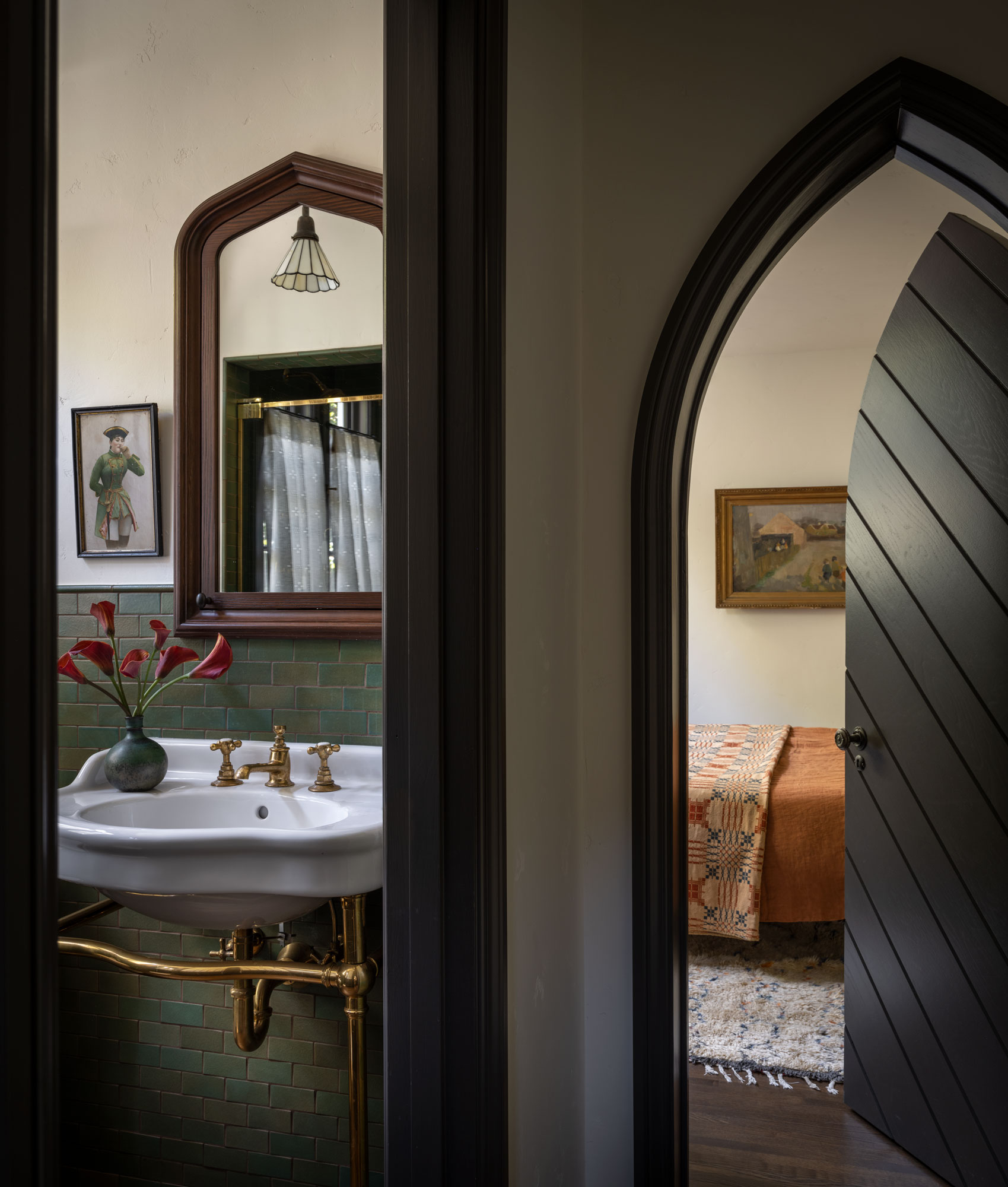
In this eclectic style home in Los Angeles, original pointed arch doorways dot the home, leaving an unmistakable period style impression – but a coat of paint takes the aesthetic down a notch with a fresh feel.
"Painting the doorways and trim rather than staining the wood makes them feel more modern," recommends Jessica Helgerson. "Also using the same color for trim and doors while maintaining a subtle color pattern throughout keeps the dramatic shape from being overwhelming."
7. Use a Pointed Arch to Enhance Minimalist Decor

An arched structure can work to enhance a sense of minimalist interior design with a note of classical. In this almost spiritual interior in Milan, architects referenced a now timeless shape — seen anywhere from the centuries-old Duomo di Milano to the slanted Feltrinelli Porta Volta building — proving that even these heightened structures can stay grounded.
"It has a great atmosphere because it comes from the place," says architect Rodolfo Morandi. "It is a connection with the people who live there."
8. Create an Irregular Shape Through the Arch Design
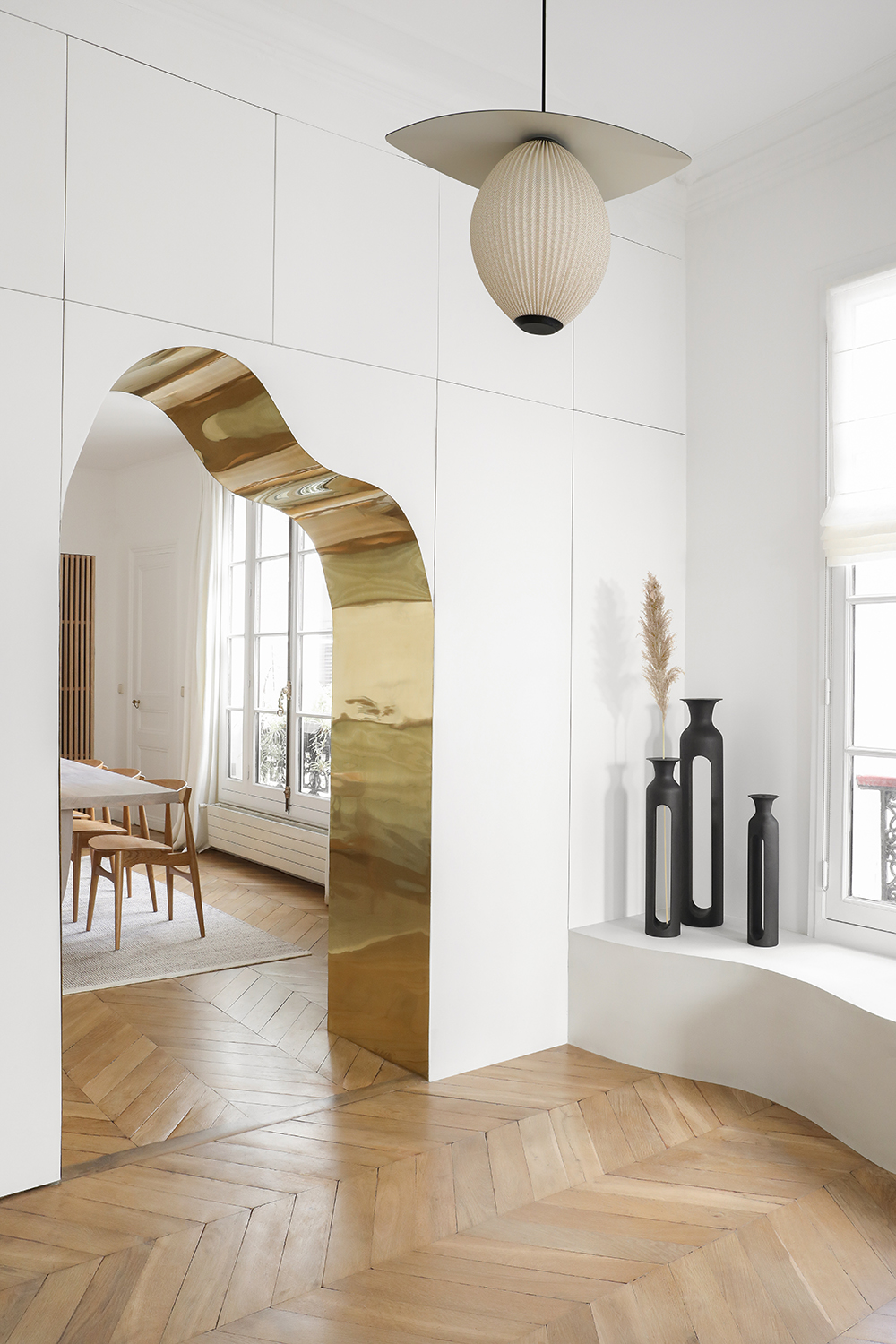
With classic arches, symmetry has as much to do with beauty as it does structural integrity. But this amorphous, shiny doorway shows that even arches can be a tad wobbly and wonderful.
"Our idea was to use a brass sheet so we can create a perfect curve that is both thin and strong," says Hélène Pinaud of Heju Studio. "We think this striking arch works so well here because the rest of the room is pure and white. We like to keep the general atmosphere really quiet and calm so it doesn’t seem too shiny."
9. Use an Arch to Change the Mood
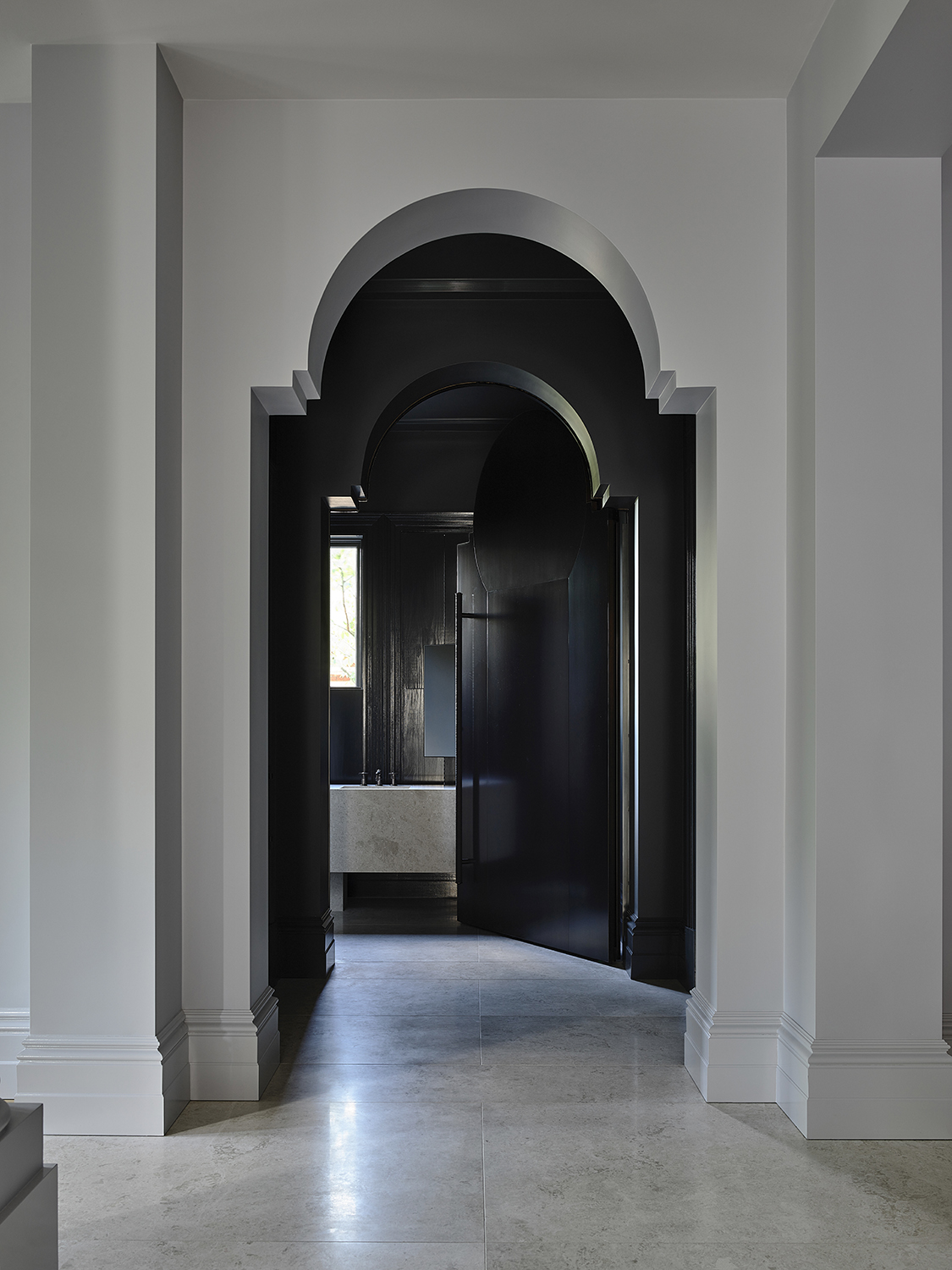
An arch is not only a chance for a striking sculptural moment, but an opportunity to hint that the entire vibe of a space is about to change, like the transition into this spa-like bathroom in Melbourne.
Nodding to the home’s Victorian-era roots, a series of arched doorways turn from white to black as they temper the overall mood. As if turning down the volume, the arch’s strength lies in visually separating each space with different attitudes – a madly beautiful approach.
Of course, you can always keep your arched doorway ideas more traditional if that is your style. This is not just a trend for the maximalists.
Instead of using molding exclusively for ceiling molding ideas and doorway trim, try adding molding underneath the arch. This subtle switch will capture the eye making your space instantly more chic. Just make sure to include trim color combinations that make a statement — the point of a decorative door reveal is to let your interiors come to life.

Olivia Wolfe is a Design Writer at Livingetc. She recently graduated from University of the Arts London, London College of Communication with a Masters Degree in Arts and Lifestyle Journalism. In her previous experience, she has worked with multiple multimedia publications in both London and the United States covering a range of culture-related topics, with an expertise in art and design. At the weekends she can be found working on her oil paintings, reading, or antique shopping at one of London's many vintage markets.
- Keith FlanaganContributing Editor